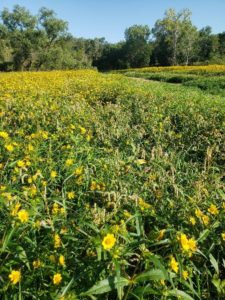DNR Warden Urges Tapping Patience
An article from WWA’s Words From The Wardens.
This article originally appeared in Wisconsin Waterfowl Association’s November, 2021 eNewsletter.
 By DNR Conservation Warden Ryan Caputo
By DNR Conservation Warden Ryan Caputo
COVID-19 has changed our world in almost every way. That was never more evident than when I started my patrol for the year’s first opener for teal, goose and dove.
The view from my patrol boat was nothing short of amazing when I saw the number of boats with so many hunters looking to enjoy the new season on the water. But it didn’t stop there.
The pandemic’s positive effect is in reminding Wisconsin residents and neighbors of our genuinely remarkable and expansive natural resources.
The call we wardens received the most concerned hunters shooting prior to the opening time for teal. Most of these hunters were using the goose shooting hours and knew there were separate times for teal hunting. You can find these times on page 23 of the Fall 2021-Spring 2022 Wisconsin Hunting Regulations.
I work in Dane County, which generally has a lot of pressure on our natural resources, even more so for hunting seasons. There doesn’t seem to be a pond or marsh that doesn’t get touched. This has been greatly amplified since COVID arrived.
USER CONFLICTS: TRY A LITTLE KINDNESS

Harvey’s Marsh Waterfowl Production Area near Brooklyn: Although the flowers are pretty, most of this area is typically under water and available for waterfowl hunters. Photo credit: DNR Warden Ryan Caputo
DNR license sales and my observations in the field show that the number of user-conflict increases as more go to the outdoors. Before COVID-19, most conflicts were between hunters. Since the pandemic became part of our lives, I have had more hunters having conflicts with non-consumptive users, such as hikers and bird watchers. This is especially true during the early part of the fall.
When the weather is nice, many non-consumptive users admire leaf colors, hiking and watching birds. It can be a surprise when this type of outdoor enthusiast runs into someone hunting or shooting nearby.
On numerous occasions in the last 18 months or so, I have talked with many outdoor enthusiasts enjoying the trails in search of a specific songbird.
Given the increase in outdoor participation, I have a couple of recommendations to ensure your positive outdoor experience.
First, please exercise patience and give others the benefit of the doubt. If you are waterfowl hunting and see someone who appears to be struggling, help them out. Teach those willing to accept help how to navigate the regulations, duck identification or even just calling.
Many new waterfowl hunters struggle to identify birds. Informing others about using the bill, head color and wings to properly identify birds can go a long way. If you are hunting in a small group and someone else comes by looking for a spot to hunt, consider asking them to join you so everyone gets quality hunting.
Spend time scouting this year. Water levels are much lower than usual. This is going to make it tough to get into spots and it will confine hunters to smaller areas. If you don’t spend time scouting, you could be left high and dry. When scouting, maximize your time by using mapping apps to find areas that might be still holding water.
Finally, enjoy the hunt. Watch the dog work, the sunrise, and enjoying time with those you enjoy. It only lasts so long. Good luck this year!
